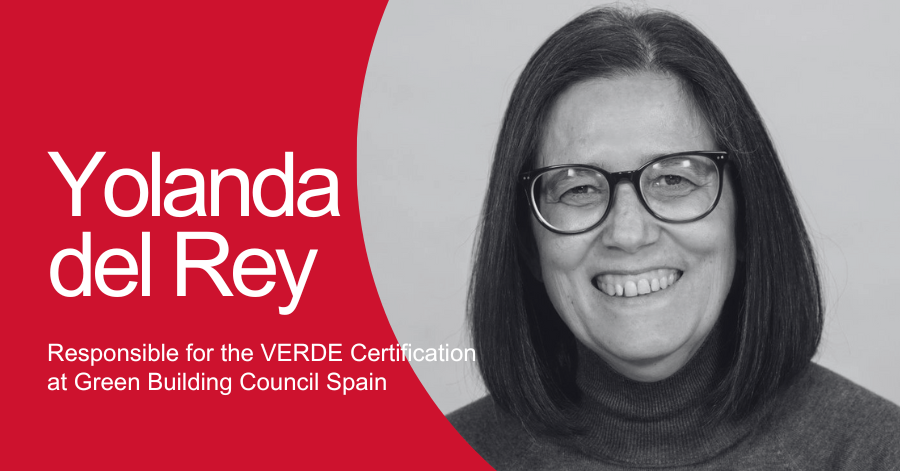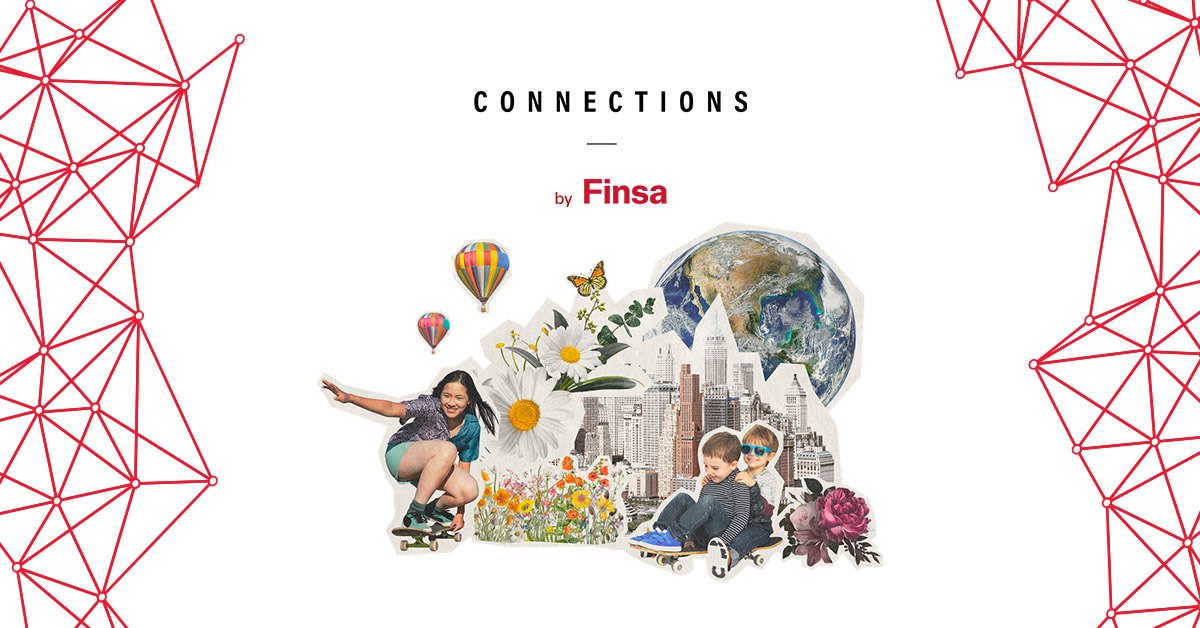“I am an architect and worked in studios until 2010, when I decided I had to change my designing and contributing to achieve a change in the way the profession is viewed“, explains Yolanda del Rey about her arrival in 2010 at Green Building Council Spain (GBCE), the association that has been promoting the transformation of the building sector towards a sustainable model since 2008. There, she serves as the head of VERDE Certification, a definite added value in the sale of a property.
We make a CONNECTION WITH… Yolanda del Rey to learn more about the work of GBCE and the state of sustainable building in Spain.
 How did you come into contact with GBCE?
How did you come into contact with GBCE?
I started by taking a master’s in sustainability and energy refurbishment. The practical part of these studies was developed at Green Building Council Spain, where my collaboration began until 2019, when I joined their team on a permanent basis.
What is the role of GBC in our country?
GBCE is a benchmark for sustainable building in Spain and aims to represent the interests of all companies, associations, entities, or individuals who build and refurbish with sustainability and energy efficiency criteria. It belongs to the international network of World Green Building Council (WorldGBC), present in more than 70 countries with 36,000 members representing various sector agents.
How have the socioeconomic changes of the last four years influenced GBCE’s work?
People and companies are increasingly aware of the climate situation we find ourselves in and are becoming more demanding. This also includes buying a home, renting an office, or constructing any type of building. At GBCE, we have been working for many years to meet these demands.
What tools do you offer for the evaluation and certification of buildings? How do these certifications contribute to ensuring sustainability?
GBCE developed its VERDE Sustainability Certification tool in 2010, which is national in scope and based on our CTE or RITE regulations, among others. In 2019, GBCE signed an agreement with DGNB —the German GBC— to manage its international DGNB SystemEs tool. Thus, we covered that part we were missing. These tools provide a guide, a way to introduce sustainability into projects without leaving anything aside, and apply methodologies that allow you to analyze your impacts, obtain benchmarks that enable you to compare yourself with other buildings of your characteristics. They also make possible the review and validation by a third party, ensuring impartiality.
There is often a lot of ignorance about these certifications. Which are the most relevant ones that architecture and interior design professionals should look for? Why?
It’s true there’s a lack of knowledge, and often they are equated with energy efficiency certificates (CEE), which are mandatory. Sustainability certifications are voluntary and evaluate all aspects of sustainability.
As I mentioned before, GBCE provides those two tools, VERDE and DGNB, which cover all aspects of sustainability — environmental, social, and economic — and are based on Life Cycle Analysis. In addition, they are aligned with global strategies, the Sustainable Development Goals (SDGs), and, at the European level, with Level(s) and sustainable finance taxonomy.
Ver esta publicación en Instagram
Just like with certifications, choosing the right materials for a project can be challenging. What general recommendations could you provide? How does the GBCE Materials Platform contribute?
Choosing materials is crucial to promote circularity and reduce the embedded carbon footprint of these materials. To do this, it is necessary to choose locally sourced products that already contain a percentage of recycled raw materials that can be reused at the end of the building’s life. The main goal is to minimize the extraction of more resources and their impacts as much as possible.
The GBCE Materials Platform provides a catalog of products and systems that have analyzed all these aspects, among others, and provide documentation that justifies it and helps us understand how they behave. All this facilitates the appropriate choice of materials.
Where does construction in Spain stand in relation to sustainability? Is it very different from the situation in other European countries?
The built environment in Spain is very aged. There are 26 million homes built before 2007 in Spain, and half of the building stock dates back to before 1980, when there was no energy efficiency regulation. In fact, four out of five buildings in Spain are energy-inefficient, meaning that 82% of our country’s building stock consumes more resources than necessary to achieve optimal levels of comfort and service.
In this context, the main challenge facing the building sector to achieve a zero-emission real estate park by 2050, as contained in the new Energy Performance of Buildings Directive (EPBD), is to increase the number and depth of refurbishments. In our country, this would mean multiplying the current rate of building refurbishment by 12, improving insulation of walls and roofs, changing windows, and, in short, protecting ourselves as much as possible from the cold and heat from outside to maintain a comfortable temperature without needing to turn on the heating or air conditioning.
In the European context, there are also many needs. More than 90% of existing buildings are inefficient and need to be updated, which explains why the building sector is responsible for around 36% of CO2 emissions and 40% of energy consumption in Europe. The global challenge against climate change and sustainability involves creating a decisive transformation of our way of building and, especially, of our built environment.
How can manufacturers and professionals in architecture and interior design contribute to achieving environmentally friendly construction?
We have a lot of work ahead of us, and each of the agents involved in construction has to collaborate within their field. Thus, manufacturers need to innovate by including recycled raw materials in their products and obtaining their environmental impacts to analyze and advance in their reduction. For their part, design companies must keep all aspects of sustainability in mind from the beginning of their projects, both in design and specifications.
Ver esta publicación en Instagram
What about public institutions? How can they support this goal?
Public institutions must be a benchmark for achieving environmentally friendly construction and lead the way by holistically including sustainability and ensuring its application in their tenders, specifications, and methodologies. For this, they can rely on sustainability certifications, like VERDE, which provide third-party independent compliance review.
What challenges do we have ahead in the sector? Do you think the messages of sustainable building are taking hold in society in general? Is there greater awareness of it?
We must build a building sector that responds to future challenges together, for which it is necessary for the economy to be compatible with the greenhouse gas reduction targets for 2030 and 2050. The challenge is enormous, as the building sector in Spain is responsible for 30.1% of final energy consumption and 25.1% of emissions, mainly from the manufacture of products, construction, use phase, and demolition, as outlined in the Building Life project roadmap. This reality is gradually permeating society, and a greater collective consciousness is being generated, a task for which GBCE works intensely every day.




